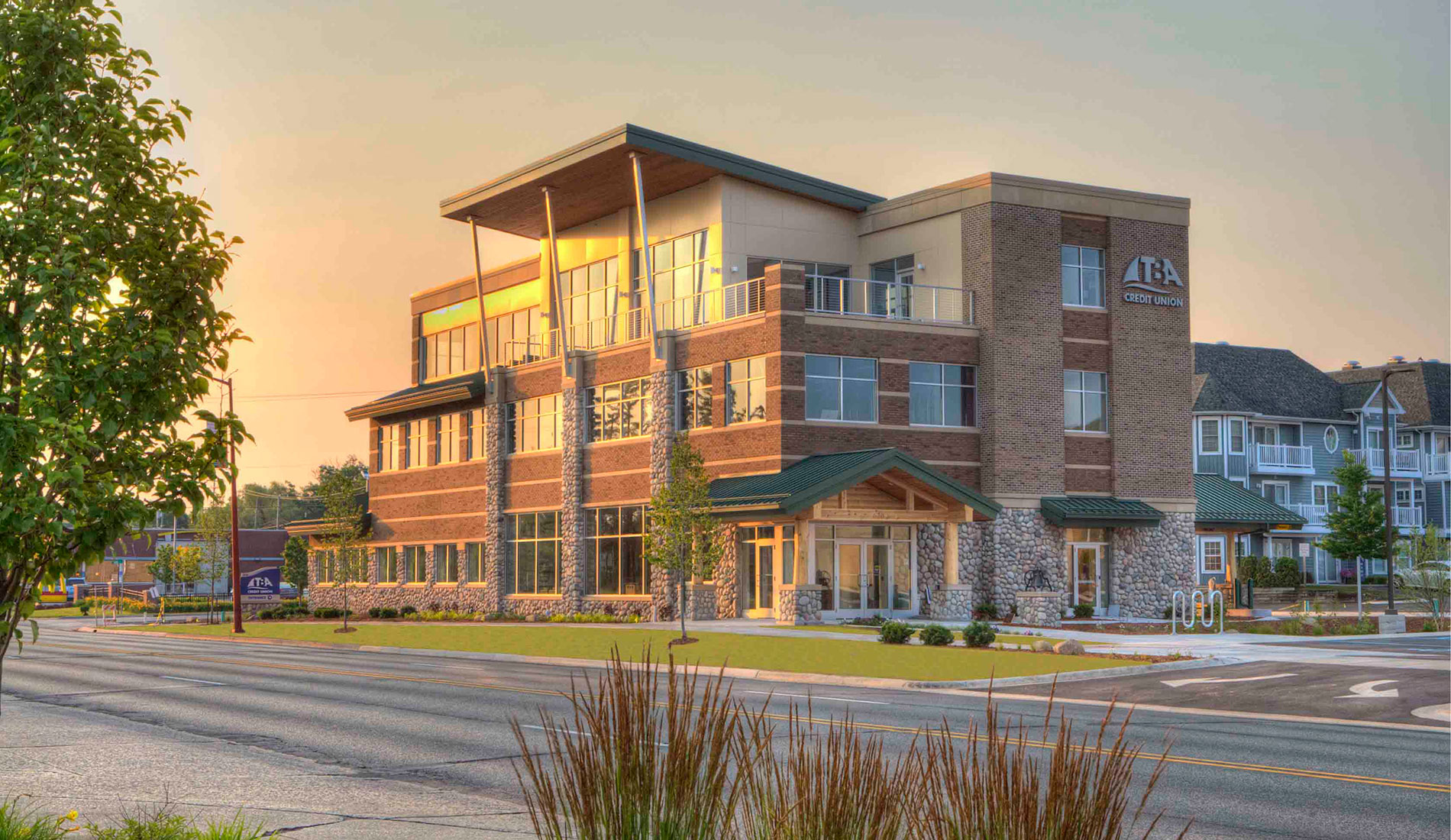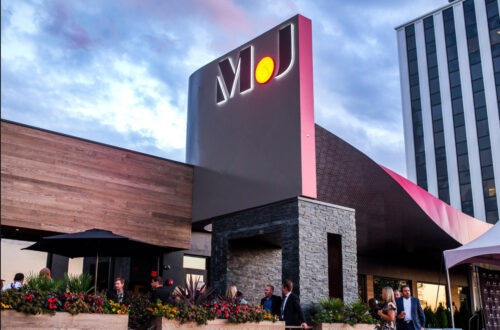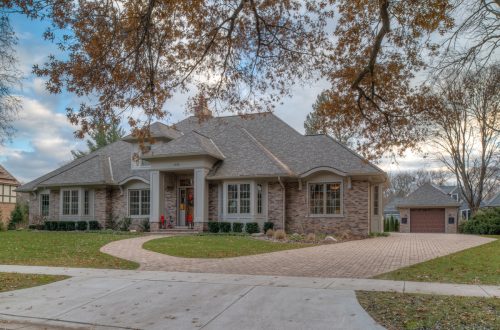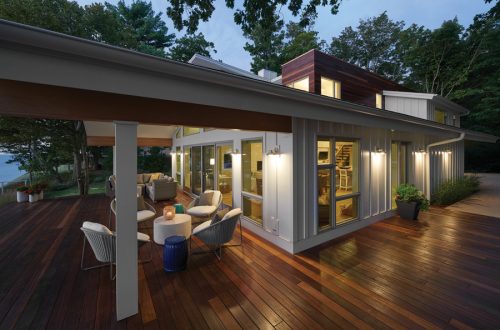Cornwell Architects, an architectural design firm located in Traverse City, has been leaving its mark in the region since 1948.
Throughout the years, the firm has worked on a number of notable projects, such as: the TACS Boathouse on Boardman Lake, the renovation of the historic Miliken Place building, the TBA Credit Union Corporate Headquarters, Elmwood Township Fire Hall, and the Elk Rapids Village Memorial Park.
While the firm is known for its architectural design work in the commercial space, the team has also worked with clients on residential projects throughout Traverse City, Leland, Eastport, and Leelanau County. Now in its 68th year of operations and third generation of ownership, the firm continues to offer architectural design services for both commercial and residential clients.
Originally established by Gordon Cornwell and then succeeded in ownership by his son Bob Cornwell, the firm was recently transferred to Mark T. Humitz, AIA, LEED AP, NCARB, who has been with the firm since 2006.
Great Lakes By Design spoke with Humitz about the Traverse City-based firm and the topic of design:
Can you tell me about your role at Cornwell Architects and the work the firm does?
My role is as a conductor and leading the team. Officially I am President of the firm, but the firm’s size really requires employees to wear several hats. We all do a little bit of everything from design and construction drawings, to meeting with clients and picking materials.
I have a little bit stronger role when it comes to firm-wide decisions: marketing, evaluating clients, choosing projects, marketing, and networking than some of the other employees in the firm.
What does design mean to you?
I think what we do, the buildings we design, and the spaces we create need to be pleasing to the eye, comfortable to be in and easy to move around in; and I think that ties into the functional aspect of it. It is often a challenge to satisfy both; there is at least a balancing act between having something highly functional and also aesthetically pleasing.
What it means to me personally, is a challenge, an exercise in creativity, putting together different forms, textures, materials, how you light a space, the lighting you choose, and the assembling of parts to make a cohesive whole.
Would you agree good design can really impact space, architecture, and the built environment?
Definitely. That is the goal. That is why we do what we do: to influence the environment and people’s enjoyment and use of their space.
What are some factors considered when working through the design process with clients to make sure you balance both the aesthetic and functional?
I view it as a continuing process of refinement where, at least me personally, I start with the functional solution to the program of the clients—meaning fitting all the pieces onto the canvas—and then arranging them in a way that creates a composition that works structurally, works from a massing and proportion, and fits on the site. It starts very pragmatically … and then refining it into a composition that is pleasing.
I believe there are fundamental properties and qualities that help a piece of architecture move into the arena of good design. The architecture accommodates the desired function efficiently, it is sustainable both environmentally and economically, it is durable and safe for owner and occupants, it is sensitive to the surroundings, and it is pleasing to the eye. The last one is the real kicker; it is extremely subjective, there are many differing opinions on the aesthetics of good design, and the criteria often vary depending on the type of space and the person viewing the design.
Vitruvius used the words commodity, firmness, and delight…and those are words not commonly used today. I think commodity is the programmatic: you have to meet the functional needs of your clients; the firmness is the durability: long-lasting and sustainable; and the delight is the beauty in the eye of the beholder. Those are the three main components he believed and I think it still holds true today.
Looking at different industries in the state, design has influenced automotive, furniture, and the arts. What is your take on design and its relationship to architecture in Michigan?
There is a rich history of quality design and architecture in the state of Michigan, from Albert Kahn to Alden Dow and some of the work he did in Midland. I think the state in general is more well-known from an automotive standpoint, because of its global impact and what the automobile has done to our society from its inception.
I think the architectural community in the state of Michigan is a hidden gem.
There are a lot of talented architects who have been trained and grown up—if you will—at larger firms and now in the Traverse City and northern Michigan area. I think that may be a hidden secret about where the architects in the area come from and their backgrounds.
Any additional comments?
As far as the firm, we are pretty excited about where we are in terms of the history of the firm. We went into a third generation ownership and are still serving the needs of Traverse City and northern Michigan. We are looking forward to the next generation, the next chapter, serving the community, and helping to create good design.
GLBD
Visit Cornwell Architects




